While the tools and features used to run successful marketing campaigns are ever-changing, there are six timeless principles of persuasion that can be used to write compelling landing page copy to drive more conversions on your website.
Since the publication of “Influence: The Psychology of Persuasion” in 1984, Dr. Robert Cialdini’s six principles of persuasion have been used in marketing activity to help persuade customers to take the desired action.
If you read traditional marketing blogs then you’ve likely heard of them:
- Reciprocity.
- Social proof.
- Commitment.
- Authority.
- Liking.
- Scarcity.
In this post, we outline how Cialdini’s six principles of persuasion can be used to write more compelling copy and design more persuasive landing pages to convert more of your website traffic.
1. Reciprocity
Reciprocity is the process of exchanging things with others in return for a mutual benefit.
You could think of this as your hook.
You have to give users something in return for their attention.
This is commonly used in the digital marketing space by giving away useful content in return for an email signup, for example.
To benefit from the principle of reciprocity you must be prepared to give generously.
Most people won’t sign up for your newsletter without getting something useful in return.
Search Engine Journal has created hundreds of high-quality resources that are available in return for some basic contact details.
Here’s example of the principle of give-and-take in action:

A ton of work goes into this content and users are often happy to opt into marketing communications as a result, thus improving CTR compared to an email sign up for with no reciprocal benefit to the user.
Check out the top blogs you visit and you’ll see most leveraging the principle of reciprocity in some form.
This tactic can also be applied within the SEO industry to generate inbound links which – if increased –have the added bonus of improving rankings, traffic, and overall conversions to a website.
The principle of reciprocity can also be applied to ad copy to increase click-through rate.
While now the norm, offering a free trial is still a process of gaining leads through giving something away.
This is a key part of bringing a customer into the marketing funnel in industries such as software.
It’s essential that this is made front and center in any ad copy.

2. Scarcity
Scarcity is another powerful technique you can use to persuade users to either click on an ad or complete a desired action once on a landing page.
Scarcity triggers fear of missing out (FOMO).
FOMO stems from the chance that we could feel regret for not making a decision in time and can appeal to the impulsive side of most people.
Examples of scarcity being used online include:
Limited Stock/Limited Edition Products
Brands such as Booking.com do a great job of using scarcity to increase conversions on their website by using numerous different messages around room availability.
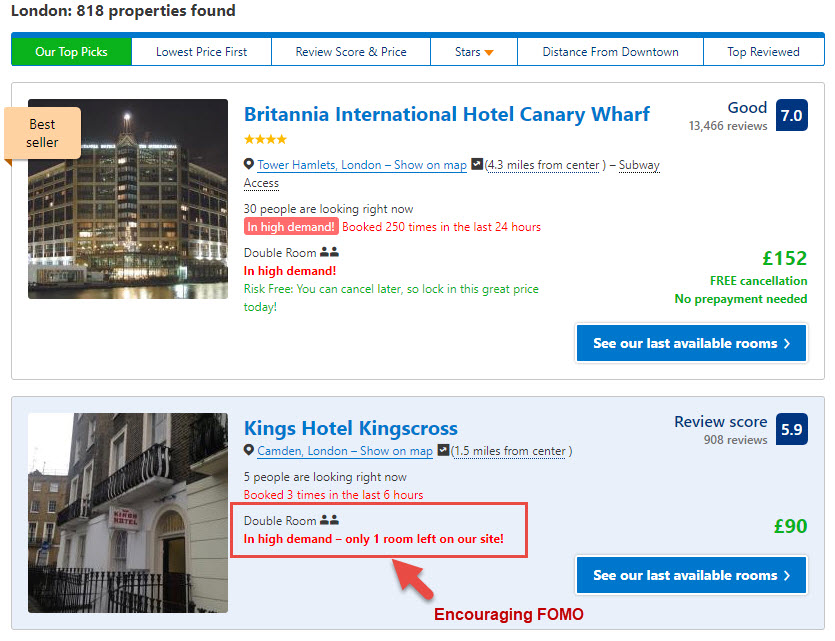
Offer/Sale Periods
Sale periods like Black Friday help to boost sales in a short period of time by triggering FOMO.
Often shoppers will be pushed into purchasing something they may not even need for fear of regret later!
Amazon has taken this a step further by offering “lightning deals,” or offers that are only available for an extremely short time period to encourage more sales:
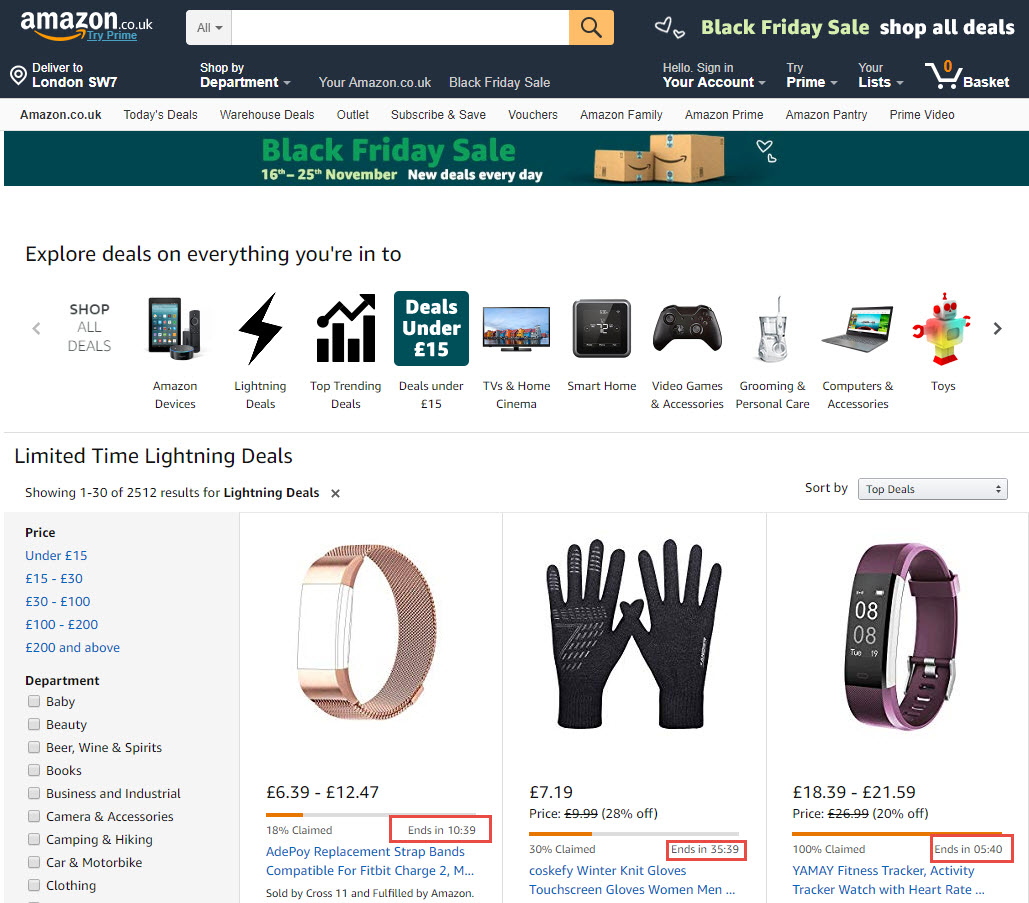
Using scarcity in your landing page copy will help boost CTR and conversions.
While not every business can rely on limited offer periods, sites like Booking.com are able to utilize this tactic year round without the need for sales period due to the scarce supply of the products they list on their site (hotel rooms).
3. Authority
Using authority symbols such as awards, seniority, industry accreditations, and expertise can help persuade users to undertake a desired action on your site.
This principle of persuasion is perhaps one of the most difficult to leverage because building genuine authority takes time.
There’s no easy route to becoming an authority within your niche, but there are some techniques you can easily implement to position yourself as authoritative.
Feature Your Company’s Awards
Feature awards your company may have been nominated for/won on your website as this will showcase authority through the recognition you have received within your industry.
Showcase the Expertise of Your Staff
This is especially important in service-based industries as the feature that sets great companies apart is their employees.
For full transparency, be sure to include LinkedIn history where possible.
Show Industry Accreditations to Website Visitors
While this is a basic expectation in many industries, don’t be mistaken for thinking this isn’t important for building authority on your website.
It’s something that your website visitors will expect to see.
Contribute to or Sponsor Relevant Industry Events
This can build authority through association.
By having your brand featured in the right places you can showcase your authority in a specific topic.
Even better if you can get representatives from your brand invited to speak at key industry events to further display your authority.
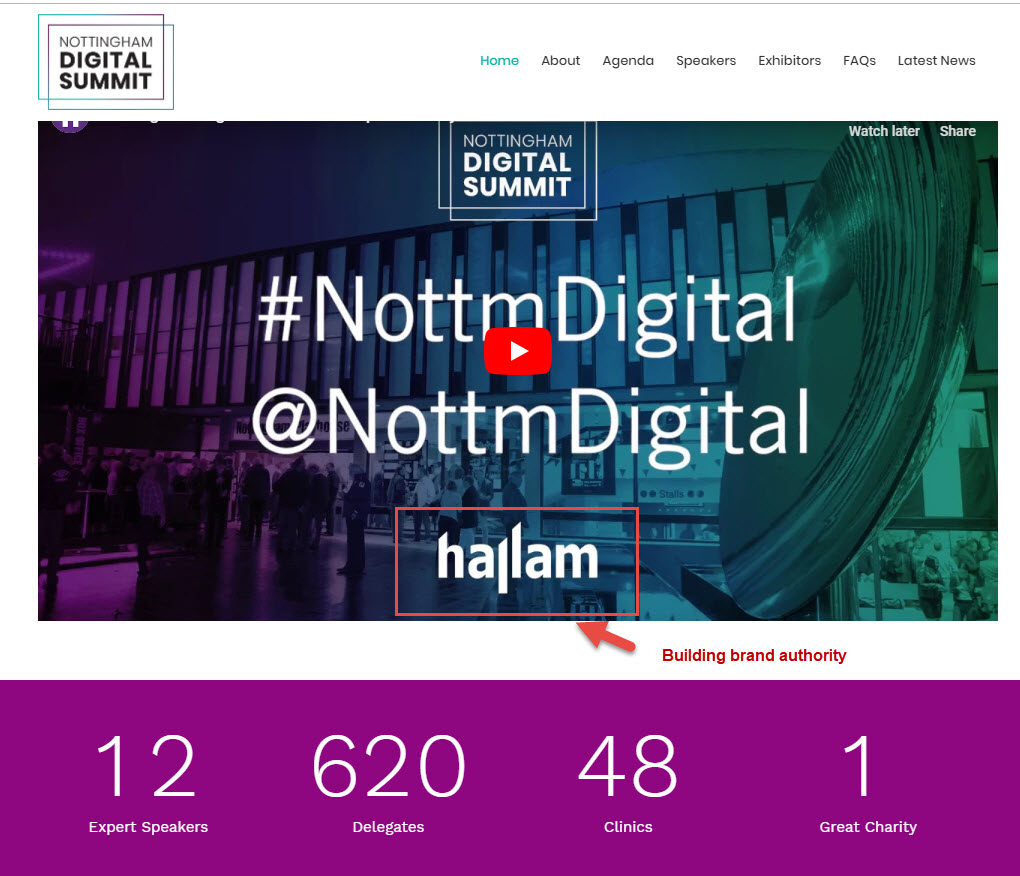
Create & Share High-Quality Content
Showcase your expertise through high-quality content generation and information sharing.
Being the source of great quality content will position your brand as an industry authority.
Creating thought leadership content in your area of expertise such as a whitepaper featuring primary research is just one example of this tactic.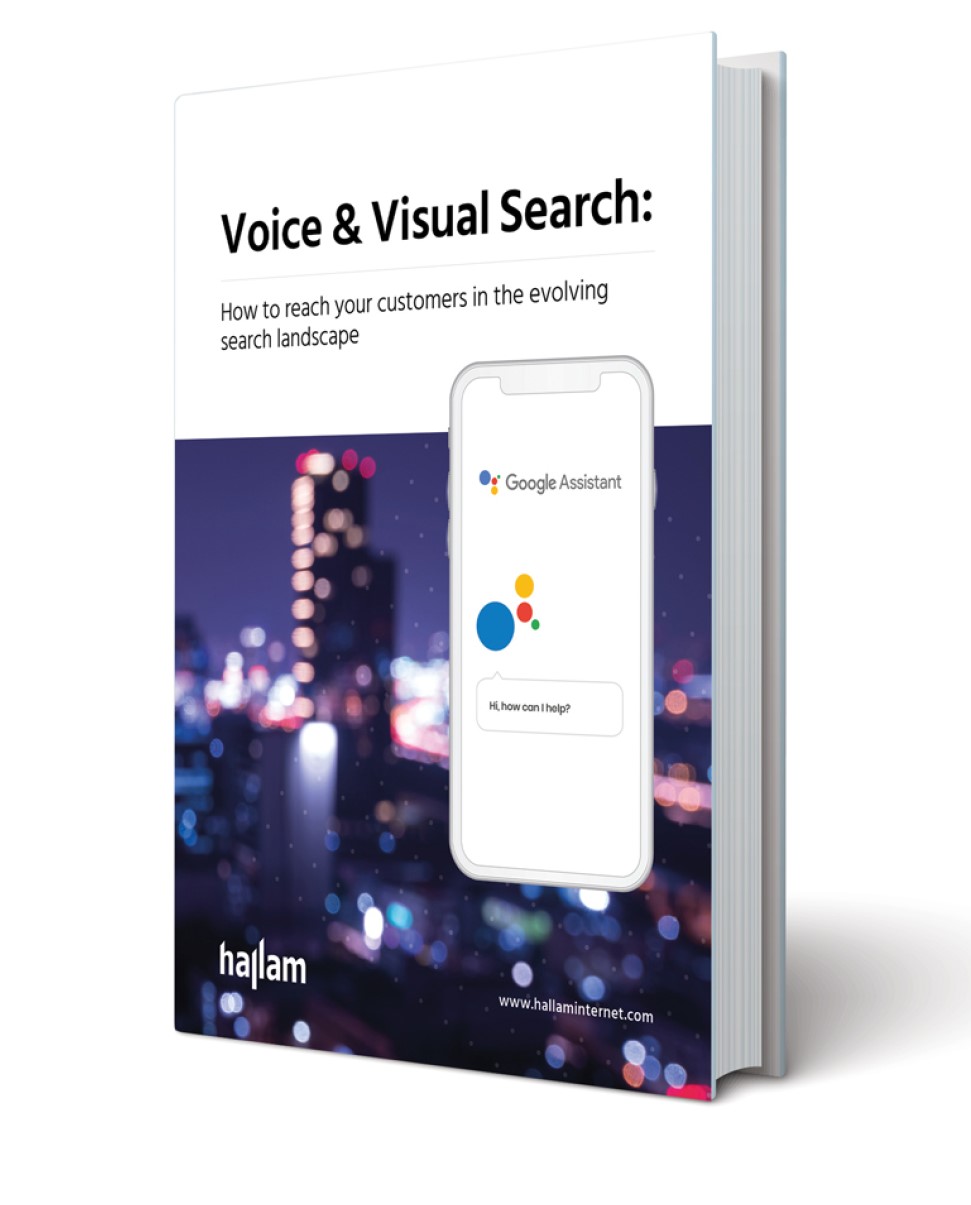
Practicing some of the above techniques will leverage the principle of authority and enhance your chances of converting website traffic.
4. Commitment & Consistency
Once people make a commitment, their opinions and actions become aligned and are consistent with that commitment.
Essentially, you feel bound by your commitment.
Creating methods of gaining your customers to commit will vastly improve the chances of them actually going ahead and following through.
There are a few examples of this at work online.
Allowing Users to Book Appointments Themselves.
While not exactly a groundbreaking feature, booking appointments is a necessity for certain businesses.
By enabling customers to book their own appointment you are asking them to commit, meaning they’re more likely to follow through.
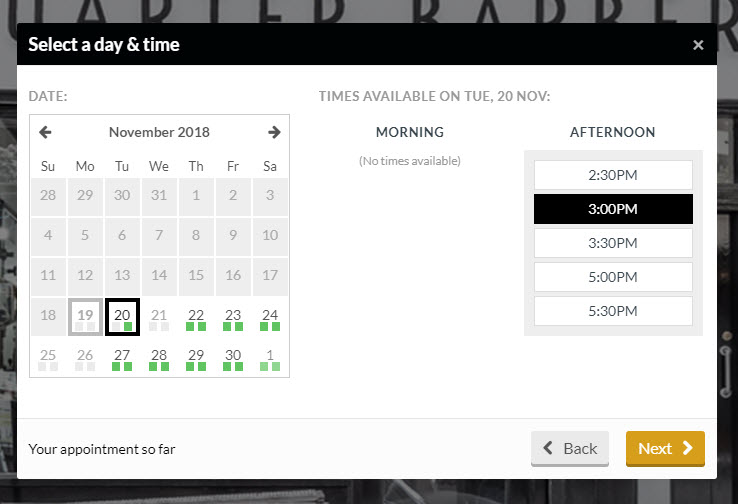
Offering Live Chat Functionality
The ability to initiate a live chat is effectively an opportunity to gain a customers commitment to a conversation with your brand.
This is still untapped in many industries but one that can easily tap into the principle of commitment and consistency.
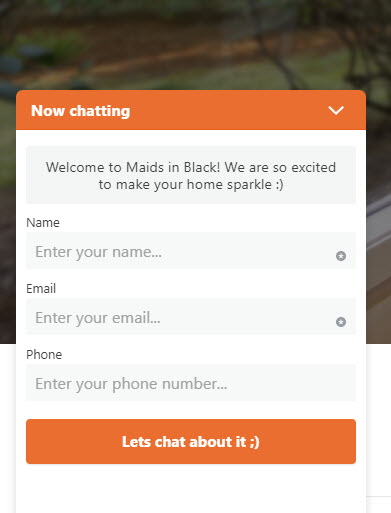
Sequential Form Design
Research published by Optimizely showed an uplift in conversion rate when form elements where split out into different stages.
This sequential form design uses the principle of commitment by providing the users with a sense of progress after filling each stage of the form – once they have committed to filling part of the form and moving on to the next step, users will feel compelled to complete the remainder.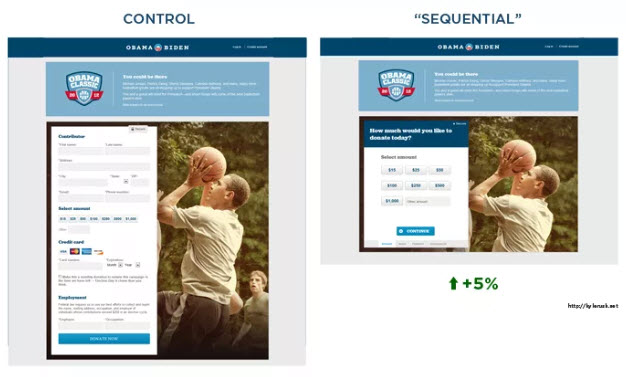
5. Liking
We are more likely to comply with requests made by people we like.
People trust word of mouth recommendations from their peers and endorsements from their favorite celebrities, one of the reasons (along with social proof) influencer marketing has taken off over the past few years.
Cialdini is quoted as saying that we tend to like people who’re similar to us, an indicator that brands should focus effort on finding common ground with their target customers.
While being liked can at first seem like a difficult thing for a brand to achieve, there are some tactics brands can employ to tap into this principle of persuasion.
Generate Customer Personas
Generate customer personas and tailor any content you create around these personas.
Building a content strategy around your customer personas will help engage with your customers’ interests and ensure they find your content interesting.
Understanding your customers pain points through persona generation will also provide you with the opportunity to illustrate how your brand can help alleviate some of their problems.

Contribute to Charitable Causes
Contribute to charitable causes your customers care about.
For example, if you’re a local service area business and there’s a particular cause you know is important to customers in your region, think about ways you could potentially be seen to help such causes.
This may include pro bono work or one off events.
This will also help engage your workforce.

This principle is somewhat abstract, but by following the steps above you will increase your chances of being liked by potential customers, thus boosting your chances of converting website visitors into leads or customers.
6. Social Proof
Social influence is a powerful tool.
Humans have a natural tendency to do things our peers do or suggest.
Sales trainer Cavett Robert once said that “95 percent of people are seen as imitators while only 5% are classed as ‘initiators’.”
It’s clear that a large portion of society will be influenced by the decisions or suggestions made by their peers meaning this principle of persuasion can be a hugely powerful one.
Social proof is used extensively by brands online and examples include:
Reviews
Ecommerce retailers that clearly displaying positive customer reviews are able to lean on the power of social proof to increase website conversions.
This can also be applied to the B2B space by showcasing client/customer reviews.

Case Studies
Using case studies is a more in-depth version of a client review.
Common in the B2B space, case studies can help provide the full story around how your brand has helped customers similar to those you’re trying to appeal to through your website messaging.
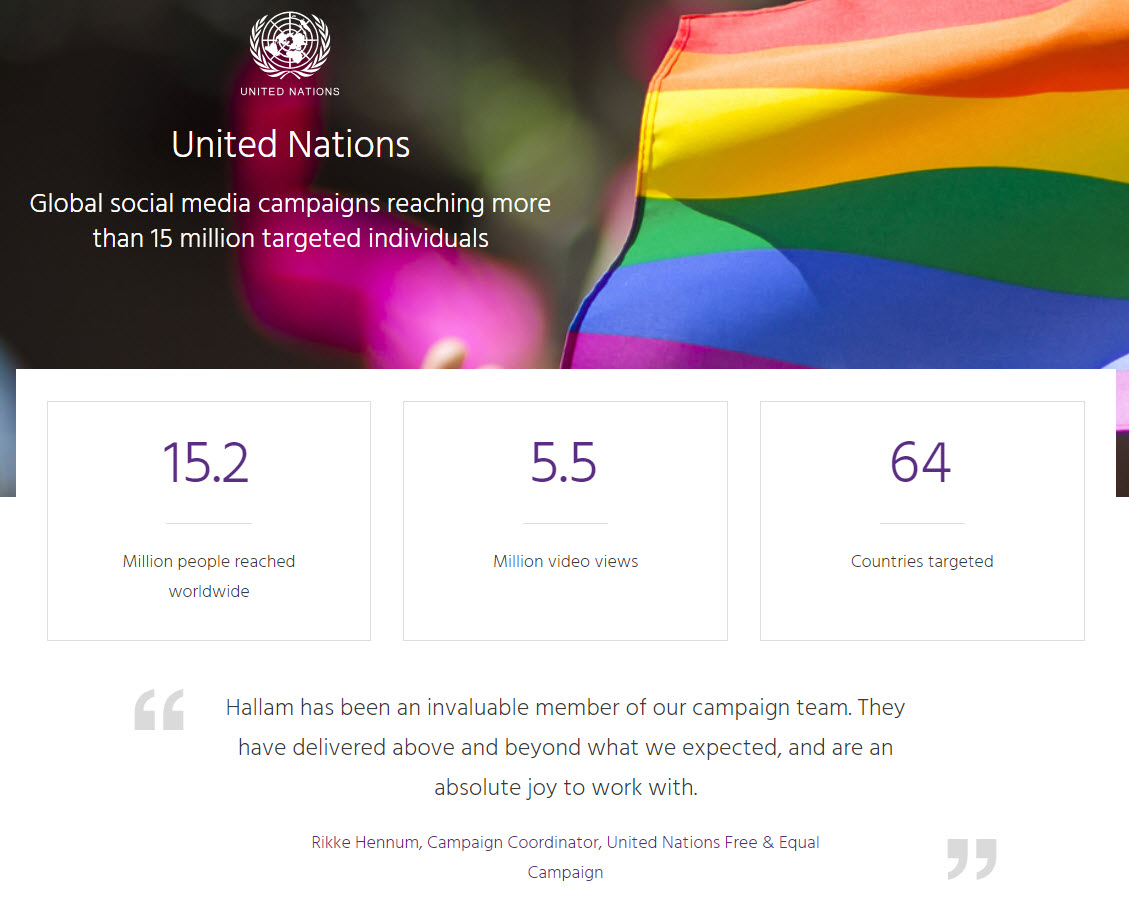
Displaying Recognition Your Brand Has Received Online
An additional form of social proof, this is all about having your brand seen in the right places online.
Examples include “as featured in” listings commonly found on startup websites to showcase new product innovation. 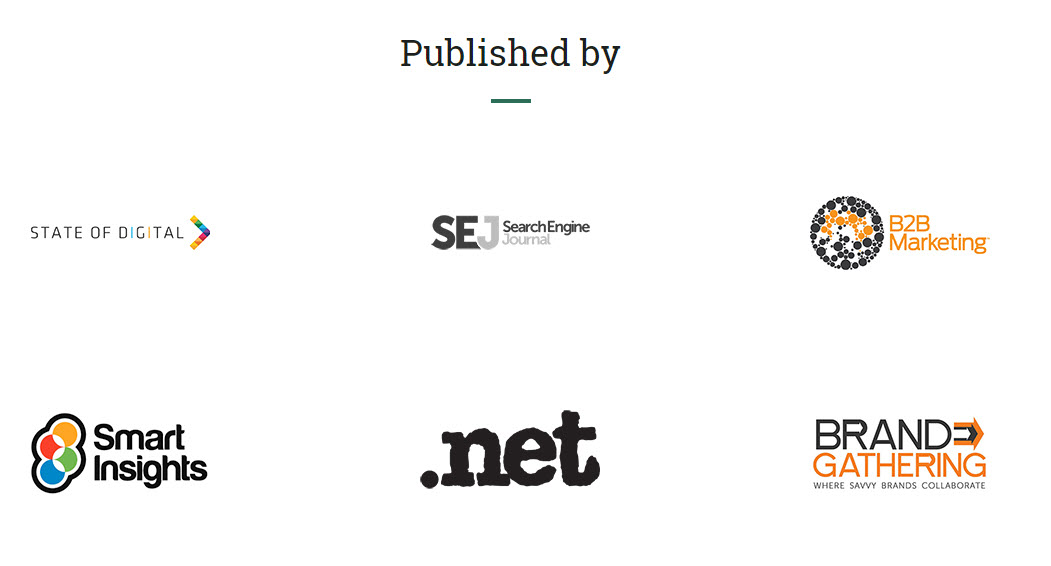
It’s simple for even the smallest brands to start tapping into the power of social proof.
Displaying positive social sentiment will have a positive impact on conversion rates, so if you can lean on tactics like those listed above then be sure to do so!
Summary
These six principles of persuasion should be factored in to all written, visual, or video content on your website to increase conversions.
Essentially, these are quick ways of grabbing the attention of your website visitors and making them take note of key factors that will influence their purchase/conversion decision.
Without them, you risk overloading your customers with information and missing out on potentially valuable website conversions.
More Resources:
- Content Marketing KPIs: Your Guide to Picking the Right KPIs for Content
- How to Write Content Better & Faster: 10 Secrets to Try Now
- What Makes a Great Landing Page: 5 Essential Elements
Image Credits
All screenshots taken by author, November 2018





